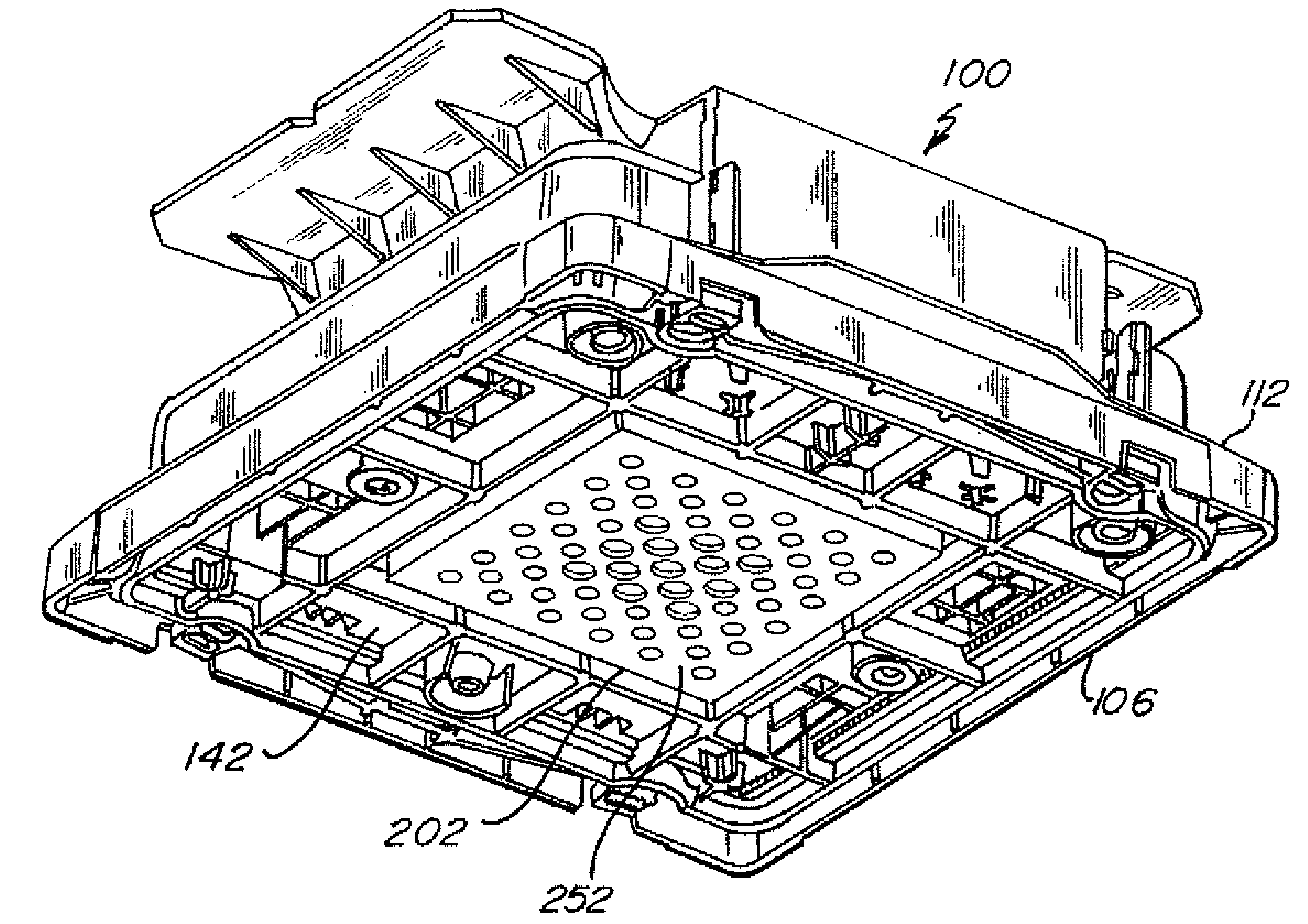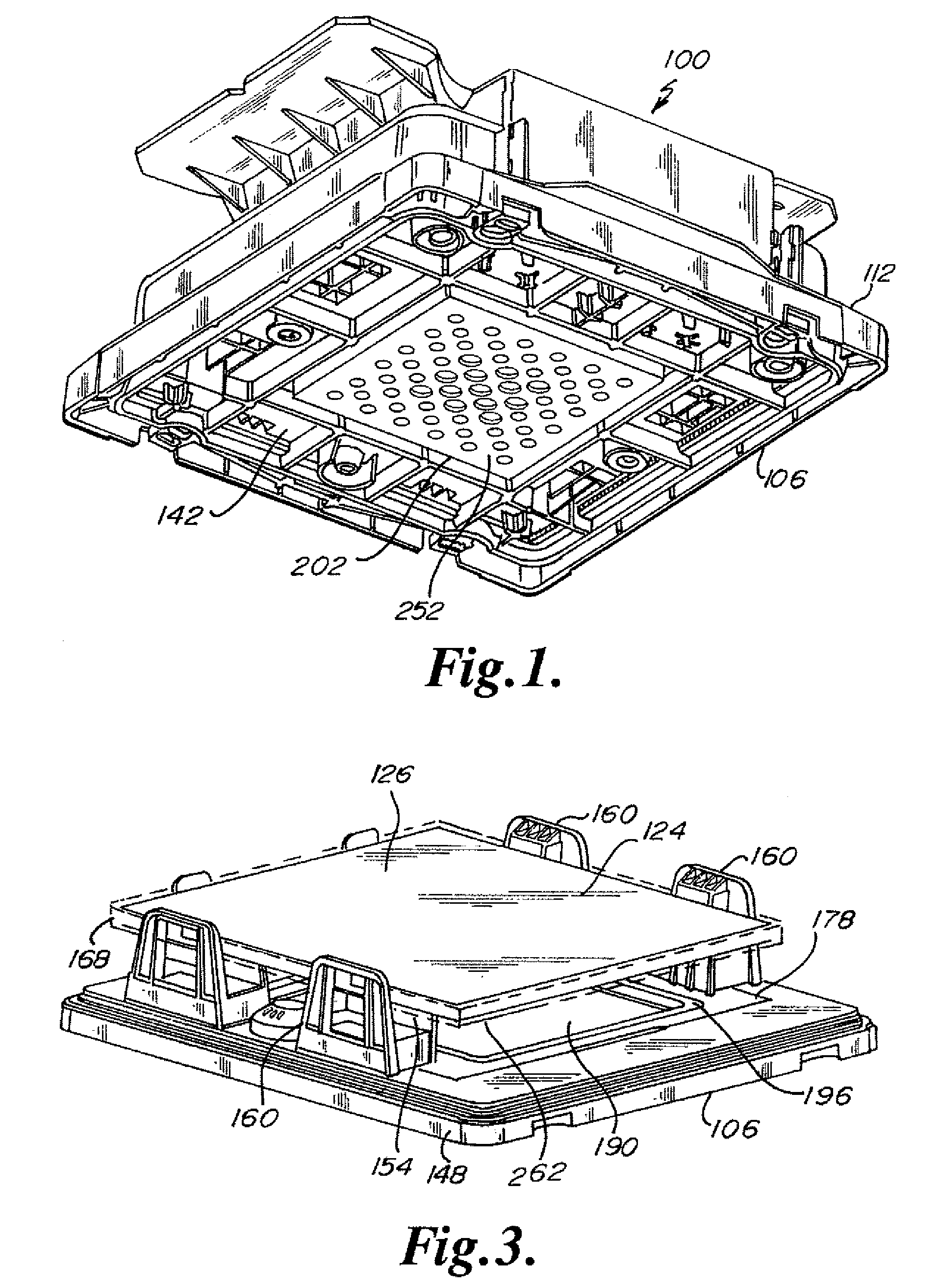Purge system for a substrate container
a technology of purging system and substrate, which is applied in the direction of packaging goods, instruments, printing, etc., can solve the problems of damage to delicate features, contamination and damage of reflective photomask (reticle) employed in euv photolithography, and the inability to provide transparent pellicle materials, etc., to achieve the effect of improving sealing conta
- Summary
- Abstract
- Description
- Claims
- Application Information
AI Technical Summary
Benefits of technology
Problems solved by technology
Method used
Image
Examples
Embodiment Construction
[0034]The accompanying figures depict embodiments of a bottom opening pod for holding substrates, specifically configured as a reticle carrier, and a purging station configured as a swivelable stack of trays providing a library of reticle pods. Any references to front and back, right and left, top and bottom, upper and lower, and horizontal and vertical are intended for convenience of description, not to limit the present invention or its components to any one positional or spatial orientation. “Substrate” when used herein refers to wafers, or reticles used in the manufacturing of semiconductors. Any dimensions specified in the attached Figures and this specification may vary with a potential design and the intended use of an embodiment of the invention without departing from the scope of the invention.
[0035]In FIGS. 1-4a, there is depicted a bottom-opening pod for substrates configured as a reticle carrier 100 equipped with purge capabilities according to a primary embodiment of th...
PUM
| Property | Measurement | Unit |
|---|---|---|
| wavelengths | aaaaa | aaaaa |
| wavelengths | aaaaa | aaaaa |
| sizes | aaaaa | aaaaa |
Abstract
Description
Claims
Application Information
 Login to View More
Login to View More - R&D
- Intellectual Property
- Life Sciences
- Materials
- Tech Scout
- Unparalleled Data Quality
- Higher Quality Content
- 60% Fewer Hallucinations
Browse by: Latest US Patents, China's latest patents, Technical Efficacy Thesaurus, Application Domain, Technology Topic, Popular Technical Reports.
© 2025 PatSnap. All rights reserved.Legal|Privacy policy|Modern Slavery Act Transparency Statement|Sitemap|About US| Contact US: help@patsnap.com



